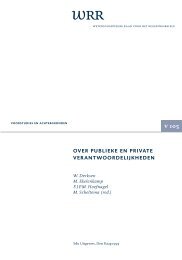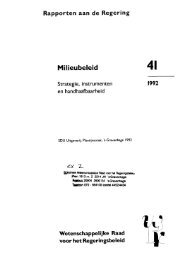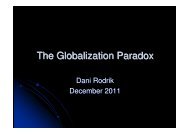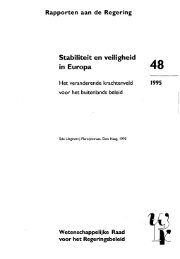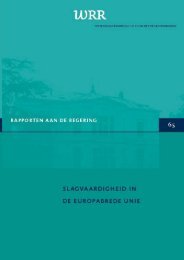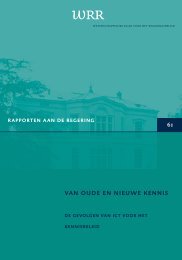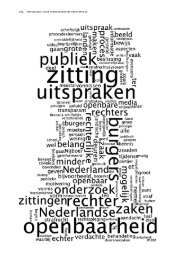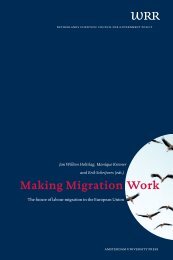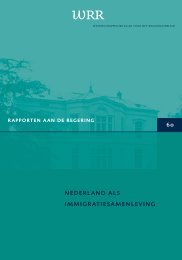De overheid als keuzearchitect? - Wetenschappelijke Raad voor het ...
De overheid als keuzearchitect? - Wetenschappelijke Raad voor het ...
De overheid als keuzearchitect? - Wetenschappelijke Raad voor het ...
You also want an ePaper? Increase the reach of your titles
YUMPU automatically turns print PDFs into web optimized ePapers that Google loves.
public policy nudges: the government as choice architect<br />
Now the final aspect of behavioral economics that makes behavioral<br />
economics different from psychology and some of the other fields it<br />
draws upon, is that it is bad economics. I spent much of my career and<br />
the last 20 years studying financial markets and how they differ from<br />
the perfect markets that some of my University of Chicago colleagues<br />
write and dream about. I am not going to talk about the official market<br />
hypothesis today, but I am instead going to merely show a single<br />
picture that I claim is the single best evidence against the basic principle<br />
that drives the official market theory, which is the law of one<br />
price. Let me just show you this photo, which was taken in Buenos<br />
Aires. It shows identical oranges with different prices. Some of my<br />
economists claim that this is not a violation of the law of one price,<br />
it is rational discrimination against Americans who are too stupid to<br />
know the Spanish word for orange juice and too stupid to notice that<br />
the photographs of the oranges are identical. But at least until the end<br />
this is all I am going to say about financial markets.<br />
11<br />
So the approach that Cass and I take is what we call libertarian paternalism<br />
or might in Europe better be called liberal paternalism. And at<br />
least in the us both halves of this expression are quite unpopular. So<br />
why do we combine two unpopular, contradictory terms and write a<br />
book about that? We think that when combined, the terms are compatible<br />
and may be even lovable. So by libertarian or liberal, all we<br />
mean is we try to devise policies that maintain freedom of choice. We<br />
don’t tell people: you must do this or you must not do that; we try to<br />
give them a choice. By paternalism we simply mean devising policies<br />
that are aimed at making people better off, as judged by themselves.<br />
It is not that Cass and I think we know what is best for other people<br />
or that we think Barack Obama or David Cameron know what’s best<br />
for other people. We think we can help people make the choices they<br />
would make if they had all the information and time necessary to<br />
make a good choice. How do we do it? We do it using ‘choice architecture’,<br />
which is a phrase we coined while writing this book.<br />
So what is a choice architect? A choice architect is anyone who designs<br />
the environment in which choices are made. Suppose you go to<br />
a restaurant and the chef has decided what things he is going to cook<br />
that night. There is someone else whose job it is to produce a menu



